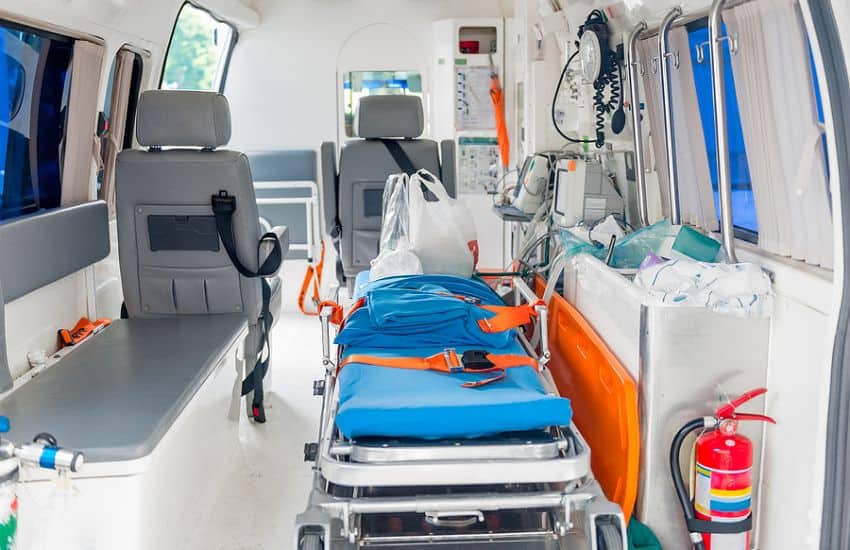- Strategic Selection Of Medical Equipment
- Optimize Your Ambulance Fleet Management
- Adopt Automation & Modern Technology
- Negotiate Favorable Supplier Contracts
- Implement Robust Preventive Maintenance Schedules
- Invest In Comprehensive Staff Training
- Utilize Efficient Budget Management Practices
- Explore Leasing Options for Expensive Equipment
- Adopt Efficient Administrative Processes
- Ensure Efficiency Through Technology and Automation
1. Strategic Selection Of Medical Equipment
Making wise medical equipment investments is fundamental to starting a private ambulance service. Consider purchasing refurbished items that maintain high quality but are available at significantly lower prices than new ones. For example, you can source stretchers, defibrillators, and EKG machines as gently used medical equipment from reputable suppliers. Ensuring the quality and reliability of these items is key to providing excellent care without breaking your budget.2. Optimize Your Ambulance Fleet Management
Managing an ambulance fleet efficiently can result in considerable cost savings. An effective fleet management strategy involves:- Leasing Versus Buying Vehicles To Manage Up-Front Costs
- Regularly Scheduled Preventive Maintenance To Avoid Sudden Breakdowns & Expensive Repairs
- Utilizing Telematics To Monitor Vehicle Performance & Optimize Routes to Save On Fuel & Time
3. Adopt Automation & Modern Technology
Using automation and modern technology can streamline various administrative processes in your ambulance service. Technologies that can enhance efficiency include:- Automated Dispatch & Scheduling Systems To Efficiently Manage Your Fleet & Staff
- Electronic Health Records (EHR) For Accurate & Prompt Medical Information Sharing
- Billing Software To Automate Invoicing & Payment Collections, Reducing Errors & Administrative Labor.
4. Negotiate Favorable Supplier Contracts
Effective negotiation with medical suppliers can result in significant cost savings for used medical equipment. When sourcing medical equipment, supplies, and other necessities, consider the following strategies:- Building long-term relationships for better pricing and payment terms.
- Seeking bulk purchase discounts to lower per-unit costs.
- Comparing multiple suppliers to get the best deal without compromising quality.
5. Implement Robust Preventive Maintenance Schedules
A well-executed preventive maintenance schedule for both your vehicles and equipment is essential. This includes:- Regular Checks & Servicing To Prevent Major Malfunctions
- Maintaining Detailed Logs For Each Vehicle & Equipment Piece To Track Service History & Anticipate Future Needs
- Scheduling Proactive Replacement Of Parts & Consumables To Avoid Emergency Repairs
6. Invest In Comprehensive Staff Training
Your staff is the heart of your ambulance service, and their training directly impacts operational efficiency and patient care quality. Investing in comprehensive training programs can generate cost savings through:- Enhanced Patient Care, Reducing the Risk of Liability Issues
- Efficient & Effective Use of Medical Equipment, Minimizing Wear & Tear
- Improved Incident Response and Management, Leading to Fewer Mistakes & More Successful Outcomes
7. Use Efficient Budget Management Practices
Effective budgeting is critical to maintaining financial health in your ambulance service. Key practices include:- Regularly Reviewing & Adjusting Your Budget To Reflect Current Operating Conditions
- Setting Aside Contingency Funds For Unexpected Expenses
- Using Financial Management Software To Track Spending & Monitor Cash Flow
8. Explore Leasing Options For Expensive Equipment
Rather than purchasing all equipment outright, consider leasing options for more expensive items like advanced life support systems and communication technologies. Benefits include:- Lower Initial Capital Expenditure, Allowing Funds to Be Allocated Elsewhere
- Access To The Latest Technology Through Regular Upgrades Is Included In Leasing Agreements
- Predictable Monthly Costs Aid In Better Financial Planning
9. Adopt Efficient Administrative Processes
Streamlining and optimizing administrative processes can lead to significant cost reductions. Key strategies include:- Automating Routine Tasks Such As Scheduling, Billing, & Record-keeping To Reduce The Burden On Administrative Staff
- Implementing An Effective Communication System To Ensure Seamless Information Flow Among Departments
- Regularly Reviewing & Revising Administrative Processes To Identify Inefficiencies & Areas For Improvement
10. Ensure Efficiency Through Technology & Automation
Efficiency is the cornerstone of cost-saving in an ambulance service. Embrace technology and automation to streamline operations and enhance service quality. Consider implementing:- Automated Scheduling & Dispatch Systems To Optimize Fleet Use
- Remote Monitoring & Diagnostic Tools To Maintain Equipment Health
- Mobile Apps For Staff To Access Real-Time Information & Updates
Real-World Scenarios
Taking a deeper dive into common scenarios faced by those starting an ambulance service can further illuminate practical applications of the tips discussed.A company starting with a limited budget decides to lease ambulances instead of buying them outright. This allows them to allocate their funds towards high-quality medical equipment and staff training, ensuring top-tier service from day one.
Another ambulance service implements an automated scheduling system, reducing the workload on administrative staff and ensuring more efficient fleet deployment. This move leads to faster response times and a notable increase in patient satisfaction.
A private ambulance service negotiates bulk purchase agreements with suppliers for medical consumables like IV bags and pharmaceuticals, securing significant discounts and reliable supply chains. This strategy keeps their operating costs low while maintaining high-quality care.
Frequently Asked Questions
Understanding what questions people frequently ask about how to save money when setting up a private ambulance service can help you make a decision about what path you should take.
Preventive maintenance helps identify and address potential issues before they lead to major failures, reducing downtime and expensive repairs. It also extends the life of your vehicles and equipment, ensuring high reliability and safety.
Automation streamlines operations such as dispatch, scheduling, billing, and record-keeping. It also helps reduce human error, cut administrative costs, and improve overall efficiency and service quality.
Staff should receive comprehensive training covering emergency response, medical equipment use, patient care, and administrative tasks. Continuous education helps keep the team updated with the latest best practices and technologies, ensuring high efficiency and care standards.

